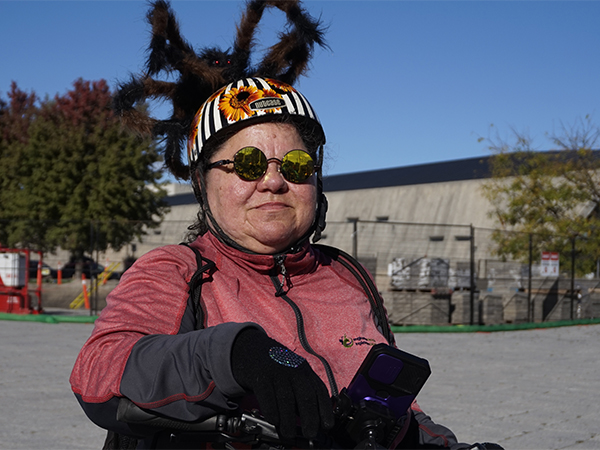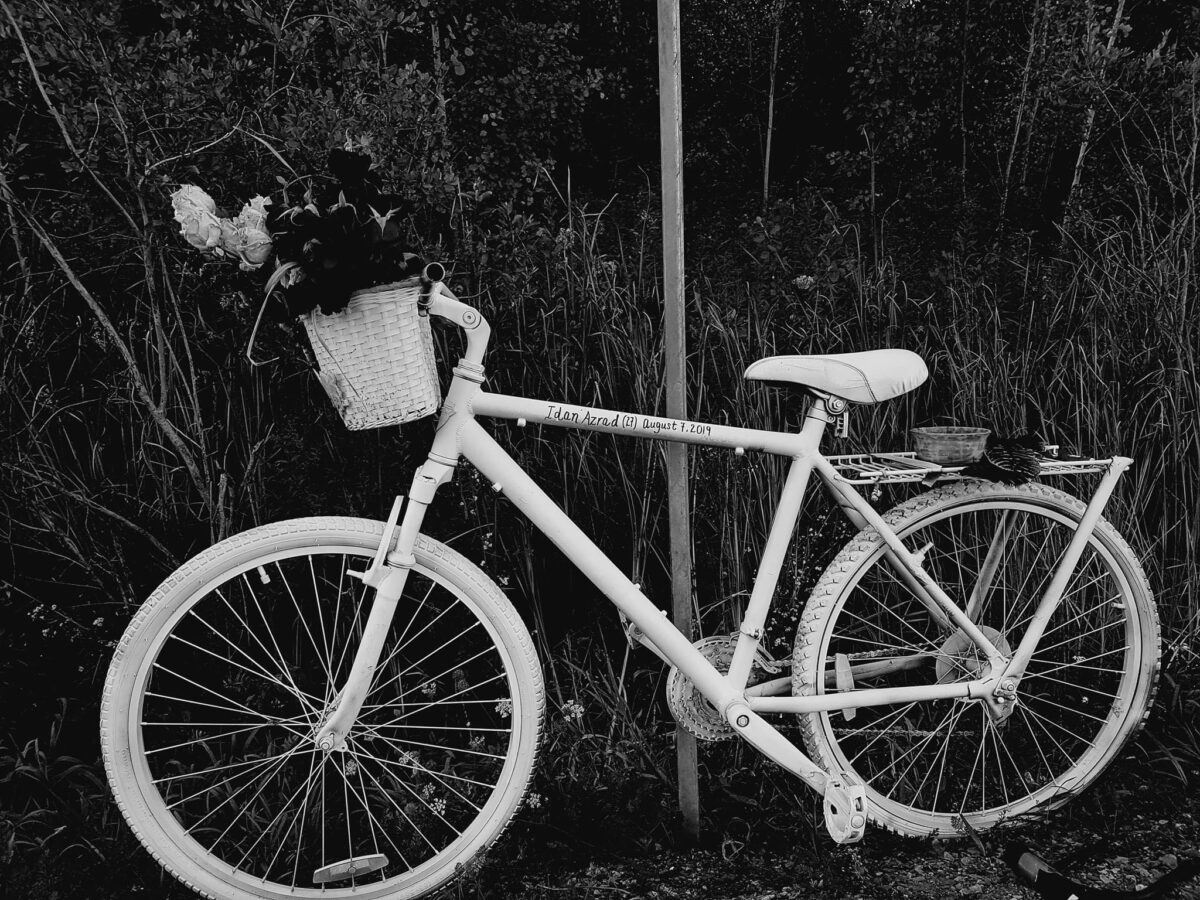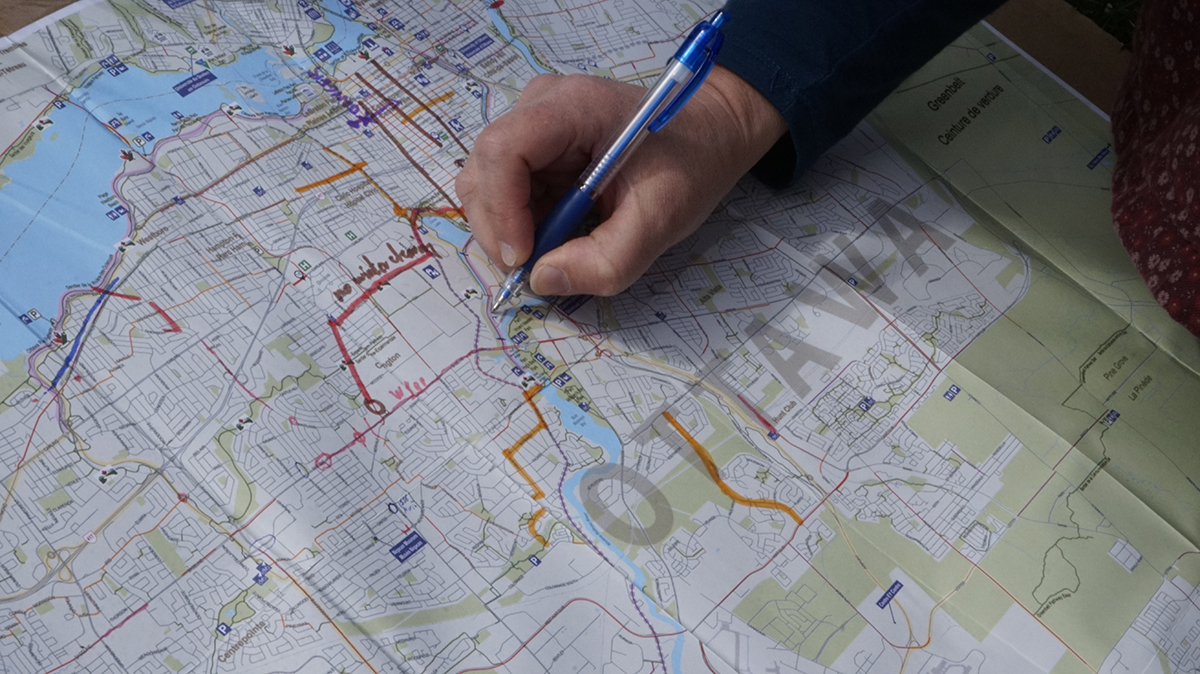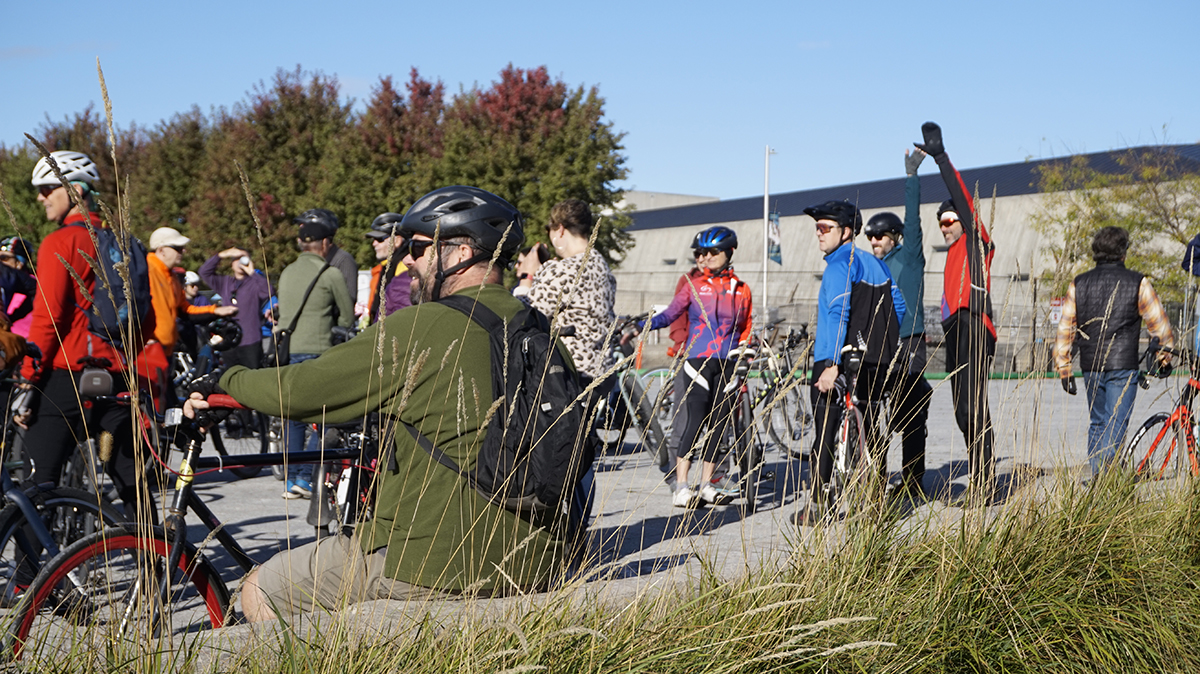Dozens of cyclists from all walks of life got together to cruise through the streets of Ottawa and Gatineau on Oct 14, 2023 — an event called Critical Mass ride — to deliver a message to municipal leaders: Make cycling safer.

“There is a disconnect between what the city says it needs to be doing and what we’re actually seeing on the ground,” said Neil Saravanamuttoo, director of CitySHAPES, a non-profit founded by Ottawa mayoral runner-up and former city councillor Catherine McKenney.
Saravanamuttoo, a self-described “community organizer by heart” whose background is in economics, is an active participant in the Critical Mass rides, but not the group’s leader. It doesn’t have a leader; even the route it follows is determined by the whim of whoever is at the front of the pack.
“What’s interesting about Critical Mass is it’s a self-organizing event,” Saravanamuttoo said. “I’m someone that is happy to promote the event, but the model of Critical Mass is that it’s the same day, the same place, every month. That allows the community to come together and self-organize.”
Saravanamuttoo said he sees a disconnect between the city’s public climate change goals, which have a short deadline, and the speed at which the city invests in sustainable public infrastructure.

“What the city of Ottawa has done is laid out a program to try to get 50 per cent of all trips done by “sustainable” modes of travel within 25 years,” he said.
“That means we need to be taking roughly half our trips by walking or biking or bus or train. To be able to walk or take your bike or take the bus, you need the infrastructure or the services there to be able to do that. … In fairness to the city, they’ve made significant progress on active transportation infrastructure over the last decade. We’ve seen a number of new bike lanes appear. They’re well used, they’re well loved, but we’re not moving quickly enough.”
Serious injuries
Saravanamuttoo and activist Dave Garand both noted the particular, significant challenges biking in the east end of Ottawa and other suburban areas due to lacking infrastructure.
Garand, a resident of Ottawa’s east-end and seasoned bike repairer, became involved in lobbying for safe bike infrastructure because of his kids. When he moved to a new home, his children did not have access to the school busses. But the school was too far away to walk so they decided to try biking.
“The day before we mapped out a route and I showed them the best way to go,” Garand said. “So off they went. They came back after school going, ‘well, at this one intersection, this car harassed us and came too close as we were pulling up to the stop sign.’ … It’s only three kilometres away, through residential areas. Yet, as they’re half-way there, they had this run-in with this car. The problem is, they took the position they needed to to be safe, and the car didn’t think that was right.”
City of Ottawa data shows that cycling can be very dangerous in the city. Between January 2017 to December 2022, Ottawa recorded 1,321 traffic collisions involving bicycles. Of those, 70 were classified as major injury and another eight resulted in fatal injuries.
When cyclists are fatally injured on the road, “ghost bikes” are sometimes placed at the accident site. These bikes are painted white and decorated, often with flowers and the name of the cyclist.

Garand recalled making one in 2019 for Idan Azrad, a man who was injured on his bike and later died in a hospital. Azrad’s accident was on Renaud Road, just a kilometre from where Garand lives.
“At the time, the president of Bike Ottawa called me at work and asked me if I could prep a ghost bike, which I did,” Garand said. “It took me a couple days to lock down the bike, get it painted, stripped, all those things. And then, it took me [a while] to get the strength to go and place it at the site of the collision. That had a profound impact on me.”
Garand said the ghost bike stayed for around 3 years, at which point the city removed it due to a complaint. He considered putting it back up, but chose not to in case it was the family’s wish to have it gone.
Policy changes
The Critical Mass ride is primarily intended to indicate a need, and a desire, for better biking infrastructure by the sheer mass of individuals. As the rides gain more attention, though, the public representation can also be queried about where the city is failing them.
Chris Hircock, a representative of School Streets Ottawa, joined the Oct. 14 ride. It ended with a picnic in Patterson Creek Park. Hircock presented a map to the participants there that they could mark up with pens and highlighters, indicating areas they felt were lacking infrastructure for bikers. A QR code also directed them to an online form where they could submit their thoughts in writing.

“It’s really looking to amplify the voices of families who just want to be able to make that trip but don’t feel safe to do so,” said Hircock. “They approach their councillor, we offer that coordinated message through delegations to council, through transportation committee, through road action safety plan, through soon-to-be board of health. We want to consider active transportation as a health issue, too.”
Other advocacy groups, like Bike Ottawa, are also represented at the Critical Mass rides. Some city councillors go out of their way to attend. Saravanamuttoo said the increasing popularity of Critical Mass rides is a sign that the public needs to be heard.
“Vancouver used to do Critical Mass rides for a number of years and then they stopped as the city started to put in really good biking infrastructure,” said Saravanamuttoo.
“There were a number of years where there were no Critical Mass rides at all. Those rides have restarted [because] people in Vancouver feel they need to stand up and be heard as the current city government makes some unfavourable decisions with regards to biking infrastructure. … So, in Ottawa, I think it’s fair to say that the community probably felt the same way.”
He pointed specifically to the Queen Elizabeth Driveway Active Use Program, which closes lanes of the Queen Elizabeth Driveway for use by pedestrians and cyclists during certain hours. Mayor Sutcliffe has said it should be scaled back. However, the data he based his comments on has been challenged by the National Capital Commission, which claimed it was miscalculated and misrepresented the active users.
“The actions of the mayor have really upset a lot of people, a lot of people who feel that they need to have their voice heard,” said Saravanamuttoo.
“They’re expressing their voice through participating in a Critical Mass ride, to let the mayor know: hands off Queen Elizabeth driveway.”




